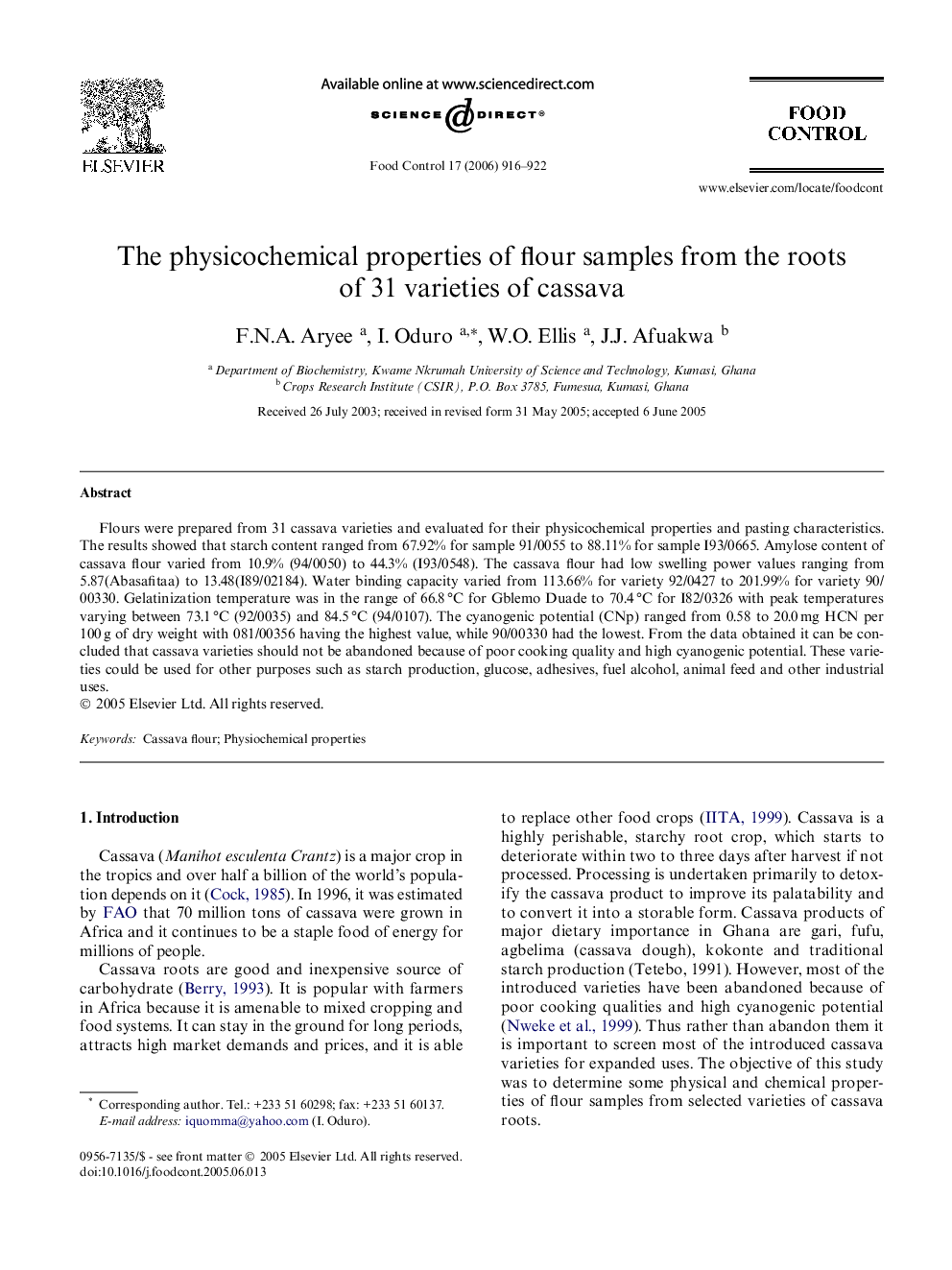| Article ID | Journal | Published Year | Pages | File Type |
|---|---|---|---|---|
| 4560808 | Food Control | 2006 | 7 Pages |
Flours were prepared from 31 cassava varieties and evaluated for their physicochemical properties and pasting characteristics. The results showed that starch content ranged from 67.92% for sample 91/0055 to 88.11% for sample I93/0665. Amylose content of cassava flour varied from 10.9% (94/0050) to 44.3% (I93/0548). The cassava flour had low swelling power values ranging from 5.87(Abasafitaa) to 13.48(I89/02184). Water binding capacity varied from 113.66% for variety 92/0427 to 201.99% for variety 90/00330. Gelatinization temperature was in the range of 66.8 °C for Gblemo Duade to 70.4 °C for I82/0326 with peak temperatures varying between 73.1 °C (92/0035) and 84.5 °C (94/0107). The cyanogenic potential (CNp) ranged from 0.58 to 20.0 mg HCN per 100 g of dry weight with 081/00356 having the highest value, while 90/00330 had the lowest. From the data obtained it can be concluded that cassava varieties should not be abandoned because of poor cooking quality and high cyanogenic potential. These varieties could be used for other purposes such as starch production, glucose, adhesives, fuel alcohol, animal feed and other industrial uses.
